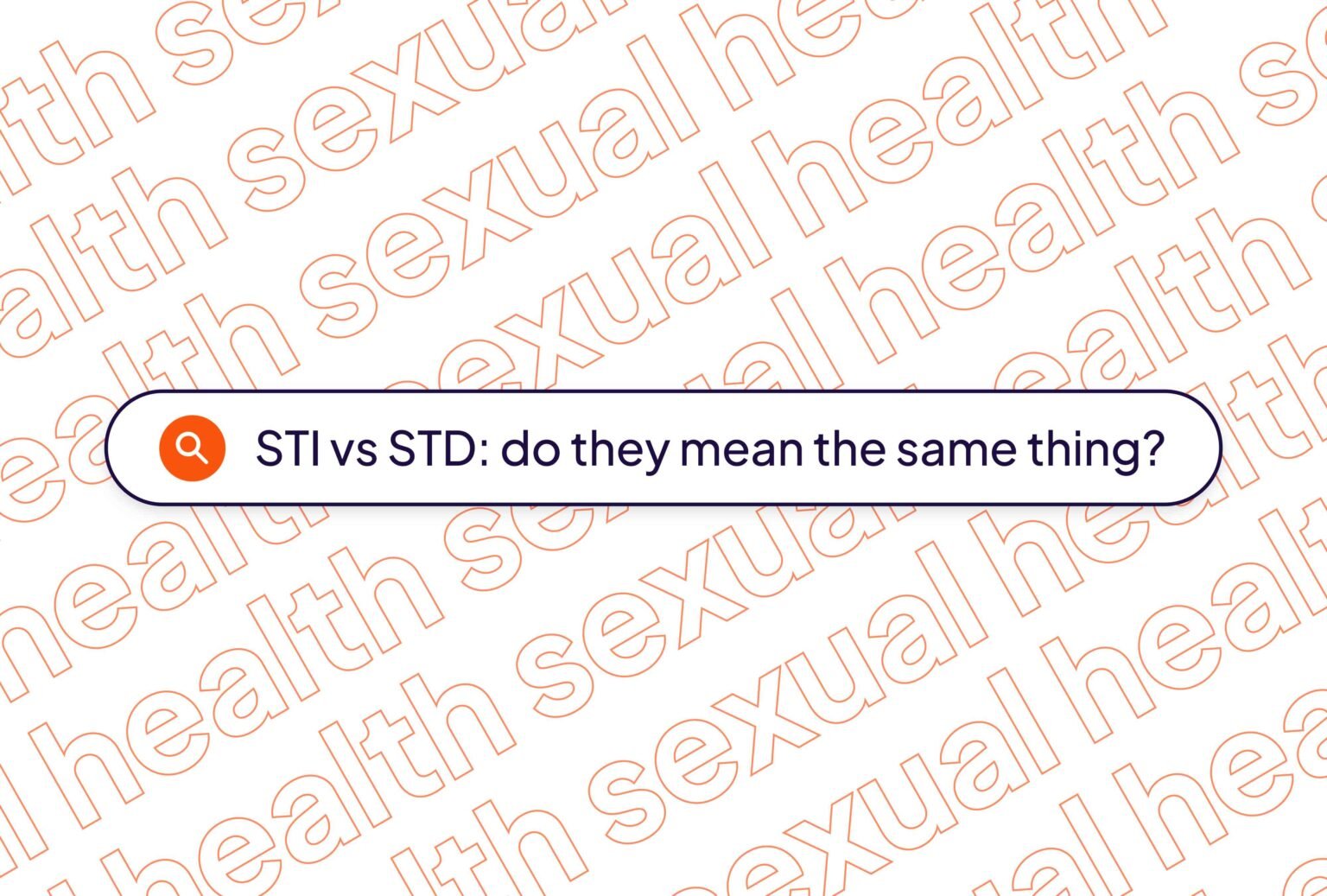STI or STD? It can be confusing to know what to say. You’ve probably heard both terms in health class and seen both used online. “STI” stands for sexually transmitted infection and “STD” stands for sexually transmitted disease. But what is the correct term for all the different STDs?
Read on to find out.
It’s okay to use the terms interchangeably, H. Hunter Handsfield, MDprofessor emeritus of medicine at the Center for AIDS and STDs at the University of Washington, told Health. “In everyday use of the term, there’s no real difference,” Handsfield said.
There is no clear consensus even among the main organizations. For example, the American College of Obstetricians and Gynecologists (ACOG) seems more likely to use STI. The Centers for Disease Control and Prevention (CDC) uses STD and STI interchangeably, noting that sexually transmitted diseases are also known as STIs.
Regardless of which term you use, diseases/infections such as chlamydia, gonorrhea, and syphilis are transmitted through vaginal, anal, and oral sex—conditions that one in five people in the United States have, according to the CDC.
Although people might use the terms interchangeably in everyday conversation, there are differences between the terms “disease” and “infection.”
Technically, the disease is considered an advanced form of infection, Damian “Pat” Alagia, MDgynecologist and senior medical director of advanced diagnostics and women’s health at Quest Diagnostics, told Health.
For example, “If a chlamydia or gonorrhea infection sets in and is left untreated or improperly treated, it can progress to pelvic inflammatory disease (PID), a complication of STIs that can threaten fertility,” said Dr. Alagia. “The disease is the full expression of the underlying infection.”
In contrast, the term STI is a term that “evolved largely from the realization of asymptomatic infections,” explained Dr. Handsfield. In other words, bacteria or viruses can cause an infection, but that infection may not have any outward signs or symptoms. Sometimes the condition — like human papillomavirus (HPV) — is cleared by the body and goes away. In these cases, the virus did not cause the disease.
But that doesn’t mean the infection is any less important—or that it should be ignored.
There are many cases where you want to respond to an infection even if there are no symptoms because it can still cause disease, Dr. Handsfield said. That’s why chlamydia and gonorrhea—mostly asymptomatic infections—are treated with antibiotics if diagnosed.
This is also why experts encourage people to get HPV screenings and Pap smears. The idea is that certain HPV infections, which are usually asymptomatic, can cause cervical cancer. Knowing whether you have high-risk HPV will help your healthcare provider determine any necessary follow-up testing or treat any precancerous lesions to prevent them from progressing to cancer.
While there is technically a difference between a “disease” and an “infection,” it doesn’t matter whether you’re using an STD or an STI; it shouldn’t change the testing, treatment or other steps you take to protect yourself and your sexual partners, Dr. Alagia said.
And, STI or STD, you’ll still want to use the same measures to protect yourself and your partners, such as openly discussing your sexual history, using condoms, and getting tested for STIs regularly.
Your doctor may use one or the other depending on their age, training or preference, Dr. Handsfield said. It may also have to do with the patient population they see most often. If they do a lot of screening in their practice, they may be using STIs. But, if they treat symptomatic infections or diseases, they can use sexually transmitted diseases.
While it’s not wrong to use STDs, the needle is moving slightly toward STI use, Dr. Handsfield noted. That change could destigmatize these sexually transmitted conditions. As Dr. Handsfield wrote in a 2017 editorial, some limited research suggests there may be less stigma around STIs.
According to the American Sexual Health Association (ASHA), the transition from sexually transmitted diseases to sexually transmitted diseases is far from the word “disease”.
“The concept of ‘disease,’ as with sexually transmitted diseases, suggests an obvious medical problem, usually some obvious signs or symptoms.” But many common STDs have no signs or symptoms in most people who have them. Or they have mild signs and symptoms that can easily be overlooked,” notes ASHA.
Whether you use the term STD or STI is up to you. “The important take-home message is that you can use either STDs or STDs, depending on your preference. But don’t pay less attention to the health impacts of either,” said Dr. Handsfield.
Prevention, diagnosis and treatment are critical. Talk to your provider about the screening tests you need based on your age and sexual history.
You should also feel safe enough to ask for a test if you think you need one, Dr. Alagiia added. “When you catch infections early, it will make a big difference in your overall health and well-being,”


